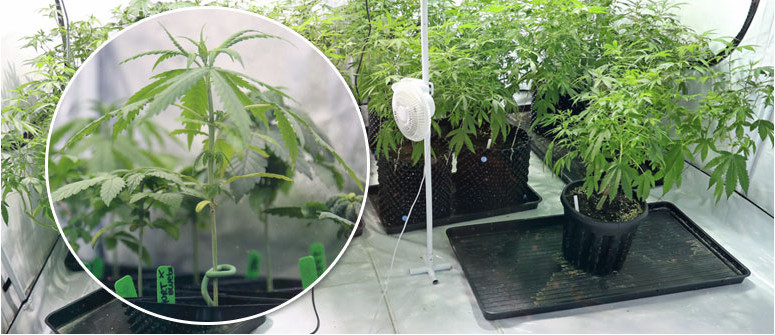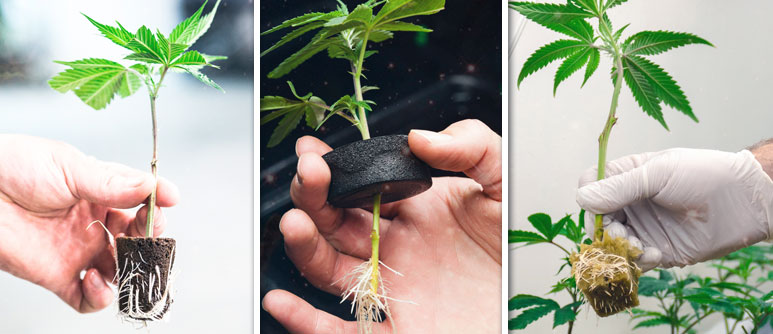What are cannabis mother plants and how to keep them healthy

In this article on we take an in-depth look at cannabis mother plants and share some expert tips on keeping healthy mother plants at home.
When growing cannabis plants from seeds, it's not unusual to find that one plant outshines its siblings, even if they share the same genetic blueprint.
It might be the plant’s unique structure and ability to flourish in your unique grow environment, or it might simply be the taste, smell, and effect of the buds its produces.
Regardless of how new you are to the world of cannabis cultivation, you’ve probably heard of the term “mother plants,” but it’s more than likely that it just left you with a bunch of questions.
In this article, we take an in-depth look at the world of cannabis cloning, mother plants, and share our own tips on how to grow cannabis mother plants at home.
So, get reading and remember to bookmark our site and check in with us regularly. Happy growing!
AN INTRODUCTION TO CANNABIS CLONING

Cannabis cloning involves making copies, or clones, of a single cannabis plant in order to preserve its distinct characteristics.
These clones are made from plant cuttings; a piece of a parent plant that has been cut and allowed to grow its own roots.
By cloning plants, cultivators are able to preserve the unique qualities of one of their plants and replicate them.
Cannabis plants, just like humans, have different traits, even if they boast the same genetic blueprint. This is essentially why seeds from the same batch and seed bank can sprout completely different plants.
To learn more about plant genetics, we recommend checking out our previous post on cannabis phenotypes and genotypes.
By cloning a specific plant, cultivators are able to preserve its specific phenotype for years to come and essentially produce the same weed each harvest.
WHAT ARE CANNABIS MOTHER PLANTS?
A mother plant is the plant used to make new cannabis clones.
Cannabis mother plants are carefully chosen by cultivators because they boast particularly favorable characteristics, such as the ability to produce big yields; a resilience to disease; the ability to flourish in a specific grow environment (such as indoors or in a greenhouse), or the taste, smell, and effect of the flowers they produce.
Cannabis mother plants are usually strong, vigorous plants that are deliberately kept in their vegetative state in order to produce cuttings that grow and develop quickly.
HOW TO KEEP HEALTHY MOTHER PLANTS
You can keep almost any cannabis plant as a mother plant, except autoflowering varieties that flower after a specific time rather than after being exposed to a specific photoperiod.
For best results, you’ll want to keep mother plants in their vegetative states, so you’ll want to make sure your plants receive between 18-24 hours of light per day.
Make sure to feed your plants with a rich fertiliser, as they’ll be essentially kept in a growth phase throughout their entire lifecycle. We recommend using a fertiliser rich in nitrogen and other micronutrients, such as calcium, magnesium, sulphur, manganese, and boron.
Here’s a little more information about the role of each of these nutrients and why they’re important for your mother plants:
Calcium
Calcium is very important for cannabis plants as it forms parts of the walls of the individual cells in the plant, making it a vital nutrient for the plant in it its growth phase. It also helps plants develop strong stems, branches, and roots. Plants with calcium deficiencies will usually display distorted leaves with yellow/brown spots.
Magnesium
Magnesium is also essential for plants in a vegetative states as it helps to stimulate the formation of chlorophyll, a group of pigments responsible for maintaining the health of the leaves and veins of the plant. Cannabis plants with magnesium deficiencies usually display yellowing leaves. Excess amounts of magnesium can cause calcium deficiencies in plants.
Sulphur
Sulphur is another key nutrient for developing cannabis plants. It is responsible for the production of proteins in the cannabis plants, as well as the formation of chlorophyll. Plants with sulphur deficiencies usually grow slowly and develop small, mutated leaves that curl upwards.
Manganese
Manganese is, like sulphur and magnesium, also plays a key role in the production of chlorophyll in developing cannabis plants. Plants with low amounts of manganese will display yellowing chloroplasts and white or grey-spotted leaves which eventually die off.
Boron
Boron is important for sugar, water, and calcium absorption in cannabis plants. Moreover, it also aids in the production, colouring and formation of leaves Boron deficiencies produce ‘death tips” on marijuana buds and also lead to potassium and magnesium deficiencies.
So, there you have it; a detailed look at cannabis cloning and how to create and maintain mother plants in your own home.

